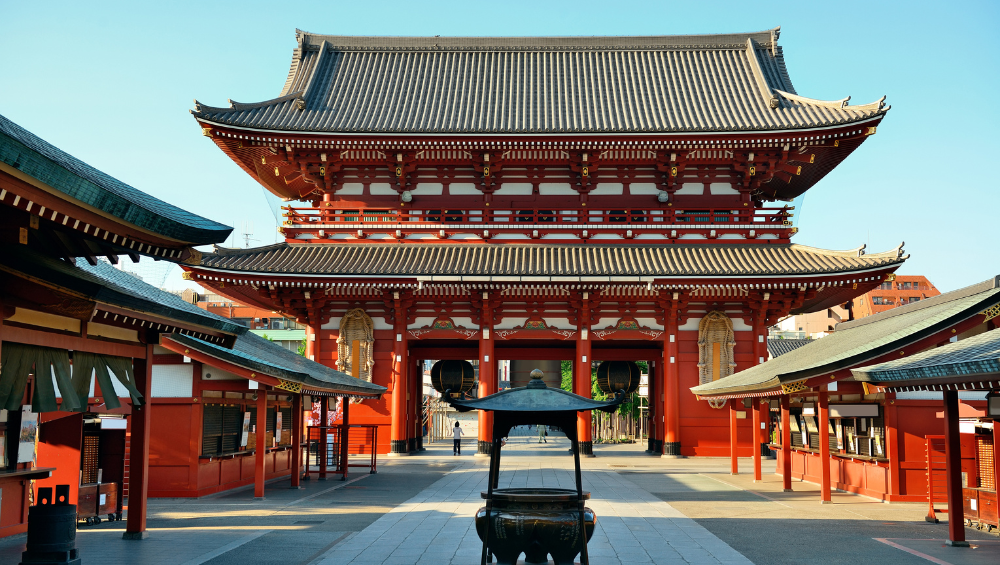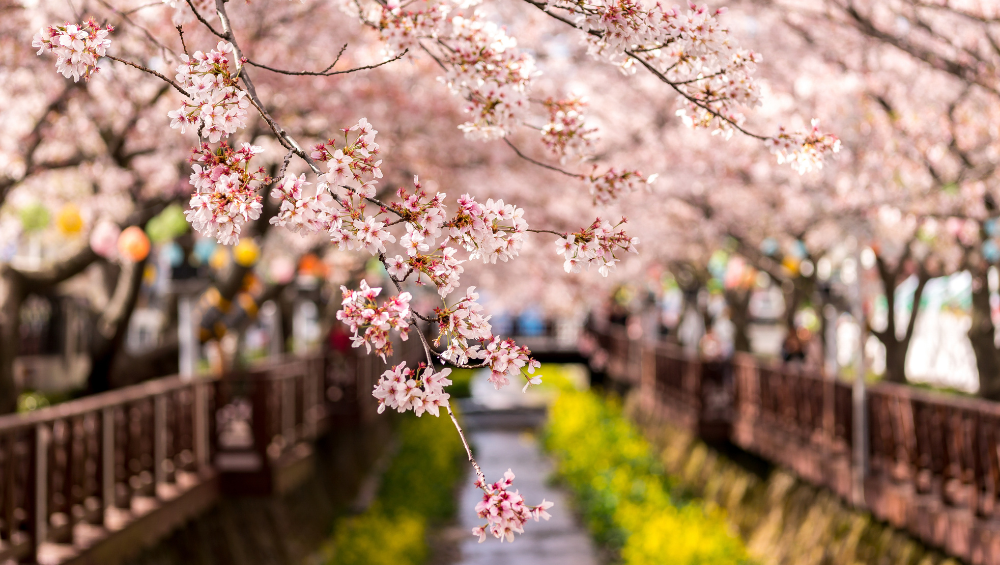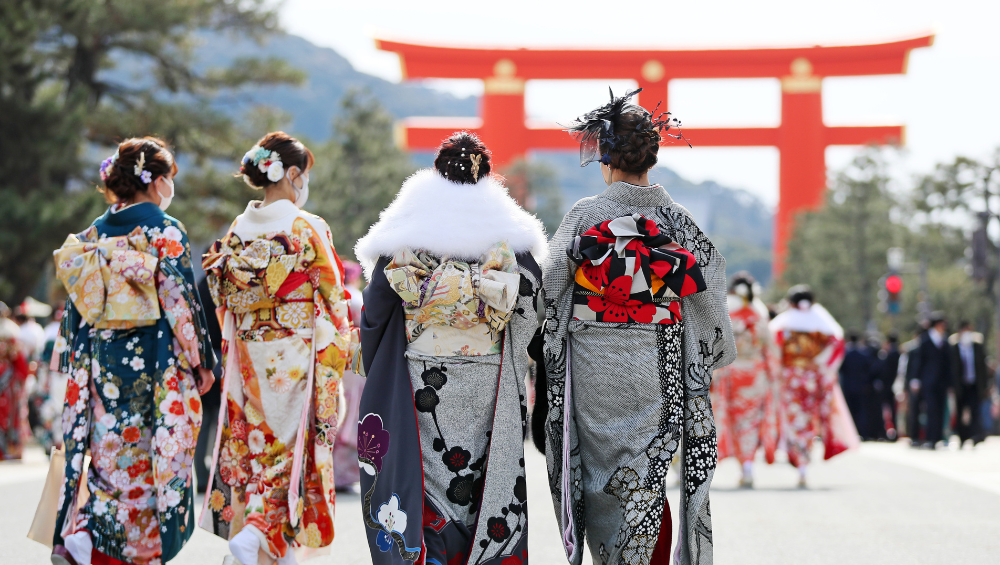Table of Contents
Tokyo travel, through the bustling heart of Japan, defies conventional descriptions. Modern yet steeped in tradition, it’s a megalopolis where you can witness futuristic technology and serene ancestral practices within a single day. With its neon-lit skyscrapers, expansive parks, and an array of culinary wonders, Tokyo offers a sensory feast for the urban explorer and culture buff alike.
This in-depth guide to Japan’s capital is designed to be an immersive experience, guiding you through the essence of Tokyo with a seasoned Tokyo traveler’s perspective.
Tokyo Travel : Japan’s Dynamic Capital
Tokyo is more than just Japan’s political and economic center; it’s a collective of districts, each with its distinct charm. In this city, you can lose yourself in the endless aisles of electronic gadgets one moment and then find yourself amidst the tranquility of a centuries-old garden the next.
Overview of Tokyo
Tokyo has a rich history dates back to the 12th century when it was known as Edo. Over the years, through the Edo period, the Meiji Restoration, and modern times, it has grown into the metropolis we see today. This section will weave the narrative of Tokyo’s past, covering key historical milestones that contribute to its unique character.
Tokyo Modern Japan
Today, Tokyo’s global influence is evident everywhere, from its booming entertainment industry to its cutting-edge technology. But beyond the glitz and glam, Tokyo remains the cultural epicenter of Japan, where ancient traditions seamlessly blend with contemporary living. This segment will highlight Tokyo’s contemporary significance and role in modern Japan.

Tokyo Travel: Historic Districts & Temples
One must peel back the layers and discover its traditional core to truly appreciate Tokyo. A stroll through the historic districts and temples is a journey back in time, where you can witness the city’s evolution into what it is today. This section will introduce some must-visit traditional spots in Tokyo, such as Asakusa, Ueno Park, and Meiji Shrine.
The Elegance of Historic Districts
Step into the past as you wander through districts like Asakusa and Yanaka, where the heritage homes and shops have been preserved. Explore the intricate network of narrow alleyways that often lead to hidden temples. Each district offers a different flavor of history and a chance to witness Tokyo’s timeless architecture and artisan culture.
Temples and Tales
Tokyo is home to some of Japan’s most significant temples and shrines, each with its own story and spiritual significance. Senso-ji, Tokyo’s oldest temple, draws millions of visitors each year, who come to experience its grandeur and the spiritual essence that it feels as you pass through the towering gate. Discover Meiji Shrine, tucked away in a forest oasis, symbolizing the harmonious cohabitation of man and nature.
- Senso-ji Temple: Tokyo’s oldest temple attracts millions of visitors annually. It is renowned for its grandeur, and the profound spiritual essence felt as you enter through its imposing gate.
- Meiji Shrine: Nestled in a forest oasis, this shrine symbolizes the harmonious coexistence of man and nature, offering a serene escape from the city’s hustle and bustle. It is dedicated to Emperor Meiji and Empress Shoken, who played a significant role in Japan’s modernization.
- Tokyo National Museum: One of the most prestigious museums in Japan, displaying a vast collection of Japanese art, including paintings, sculptures, and artifacts dating back to ancient times. It also houses exhibitions showcasing various aspects of Japanese culture and history.
Tips for Temple Etiquette
Respect and understanding are fundamental when visiting these historical sites. This portion will provide a rundown of temple etiquette, preparing you to mindfully engage with these important cultural landmarks. From proper attire to respectful behavior, this guide will ensure you have a meaningful and enjoyable temple-visiting experience.
Tokyo’s Culinary World: Foodies in Japan
Tokyo is undoubtedly a food lover’s paradise, with its diverse gastronomic offerings ranging from traditional dishes to inventive fusion cuisine. This section will delve into the history of Tokyo’s culinary scene and highlight must-try dishes and restaurants for the ultimate foodie in Japan experience.
Tokyo’s culinary scene is as diverse as the city itself. From the lively street food stalls at Tsukiji Market to the high-end dining experiences in areas like Ginza, Tokyo caters to all tastes. This section will showcase a variety of dining options, offering a taste of the multiple cuisines that can be found across the city.
Must-Try Dishes for Foodies in Japan
Explore the local favorites such as sushi, sashimi, and ramen, each prepared with an artistry that has come to be expected from Japanese cuisine. Share the table with sumo wrestlers at a chan-ko-nabe restaurant and experience the hearty stew that is their staple diet. With each dish comes a piece of Japan’s culinary heritage.
Tokyo’s culinary landscape is a paradise for food lovers. Here are five dishes you can’t miss while exploring this vibrant city:
- Sushi and Sashimi: Experience the art of sushi in its birthplace, where fresh, high-quality fish is paired with vinegared rice. Visit one of the many sushi bars where master chefs craft each piece precisely.
- Ramen: Tokyo’s beloved noodle soup has various styles and flavors. Try the rich, savory broth of Tonkotsu Ramen or the soy-based Shoyu Ramen for a warming, delicious meal.
- Tempura: Lightly battered and fried seafood or vegetables, tempura is a delightful crunch in every bite. Enjoy it as a side dish or a main course served with a dipping sauce.
- Takoyaki: These delicious ball-shaped snacks are made of wheat flour batter and cooked with minced or diced octopus. They are typically topped with savory sauces, mayonnaise, and bonito flakes.
- Yakitori: This popular street food consists of chicken skewered on sticks and grilled over charcoal. Seasoned with salt or coated with a teriyaki-like sauce, it’s a perfect snack or appetizer.
These dishes represent just the tip of Tokyo’s culinary iceberg, offering a taste of its rich gastronomic culture and traditions.
Michelin-Star Restaurants in Tokyo
Tokyo’s numerous Michelin-starred restaurants are the pinnacle of gastronomic delight for a truly elevated dining experience. Delve into the world of kaiseki, the elaborate multi-course meal, or indulge in a meal at an intimate sushi counter. This section will offer insight into the reservation process and what to expect from these revered establishments.
Tokyo boasts more Michelin-starred restaurants than any other city worldwide, making it a top gastronome destination. Here’s a list of must-visit Michelin-starred establishments, each offering a unique dining experience that captures the essence of Tokyo’s unparalleled culinary excellence.
- Sukiyabashi Jiro: Renowned as one of the most famous sushi restaurants globally, Sukiyabashi Jiro earned its stars by perfecting the art of sushi. Helmed by sushi maestro Jiro Ono, this intimate restaurant offers an exquisite omakase (chef’s choice) menu that showcases the pinnacle of sushi craftsmanship.
- Ryugin: Ryugin specializes in modern interpretations of traditional kaiseki cuisine, focusing on seasonal ingredients. The chef, Seiji Yamamoto, crafts dishes that are a feast for the palate and a delight for the eyes, exploring the depth of Japanese culinary traditions with a contemporary twist.
- Narisawa: With a unique philosophy that blends sustainability with gastronomy, Narisawa is known for its innovative approach to “Satoyama cuisine,” reflecting Japanese respect for nature. The natural landscape inspires Chef Yoshihiro Narisawa’s creations and aims to connect diners with the environment through taste.
- Sazenka: Offering a fusion of Chinese and Japanese culinary techniques, Sazenka has garnered stars for its exceptional cuisine. Chef Tomoya Kawada presents a tasting menu incorporating traditional Chinese dishes prepared with Japanese sensibility and ingredients, resulting in a dining experience transcending cultural boundaries.
- Quintessence: This French-inspired restaurant, led by Chef Shuzo Kishida, focuses on the natural flavors of its ingredients, allowing them to shine through minimalistic yet innovative preparations. Quintessence has earned its stars by redefining elegance in cuisine, with each dish reflecting meticulous attention to detail and a deep understanding of gastronomy.
These restaurants not only celebrate the richness of Tokyo’s culinary scene but also offer an insight into the dedication and passion that drives the city’s chefs to achieve Michelin-starred excellence.
Must-Visit Spots for Tokyo Travel
Tokyo is a city of endless exploration, with landmarks and hidden gems around every corner. Here’s a curated list of must-visit spots encapsulating the extraordinary blend of Tokyo’s past, present, and future.
- Shibuya Crossing: Dubbed ‘The Scramble,’ it’s one of the busiest pedestrian crossings in the world. Watching thousands of people cross from all directions with the backdrop of neon advertisements and towering screens is a quintessentially modern Tokyo experience.
- Tsukiji Outer Market: While the inner wholesale market has moved to Toyosu, Tsukiji’s Outer Market continues to thrive, offering a tantalizing taste of Tokyo’s sea-bound delights. It’s an ideal place to savor fresh sushi and explore traditional Japanese seafood.
- Akihabara Electric Town: A haven for tech enthusiasts and anime fans. Akihabara buzzes with electronic stores, manga shops, and themed cafes, showcasing the otaku culture at its best.
- Ueno Park: This sprawling green space is famous for its museums, zoo, and, during spring, breathtaking cherry blossoms. It’s a place where Tokyo’s love for culture and nature beautifully converges.
- Odaiba: Set in Tokyo Bay, Odaiba offers a futuristic escape with its high-tech entertainment hubs, spacious parks, and the iconic Rainbow Bridge. It’s also home to the teamLab Borderless Museum, an immersive art, light, and sound world.
- Ginza is Tokyo’s most famous luxury shopping and dining district, where upscale boutiques meet historic shops. Window shopping along Chuo Dori Street or enjoying a Kabuki play at the Kabukiza Theatre are unique experiences in Ginza.
- Meiji Shrine: Nestled in an expansive forest, this Shinto shrine is a spiritual oasis amid the city’s hustle and bustle. It offers a tranquil retreat and a chance to partake in traditional Shinto practices, such as making offerings or writing wishes on ema plaques.
- Takeshita Street in Harajuku: The heart of Tokyo’s kawaii (cute) culture and youth fashion, this pedestrian street is lined with trendy boutiques, crepe stands, and, sometimes, the unexpected. It’s a vibrant display of contemporary Japanese youth culture.
Each location offers a unique window into Tokyo’s vast and varied tapestry, promising unforgettable experiences to those seeking them.
Tokyo Travel Nightlife: Izakayas to Karaoke Bars
Tokyo comes alive at night, with a vibrant nightlife that offers endless entertainment options. This section will guide you through the city’s after-dark offerings, from intimate izakayas to karaoke bars and flashy clubs.
A Night Out in Tokyo
Whether looking for a laid-back evening or a wild night out, Tokyo has something for everyone. Here are a few popular options to consider:
- Izakayas: These casual Japanese pubs offer an inviting atmosphere to relax and enjoy delicious food and drinks. Try different types of sake (Japanese rice wine) and share small plates with friends.
- Karaoke Bars: Sing your heart out in a private room or join the fun in a karaoke bar. With an extensive selection of songs, drinks, and snacks, it’s the perfect activity for groups.
- Rooftop Bars: Enjoy incredible views of Tokyo’s skyline while sipping cocktails at one of the city’s many rooftop bars. It’s a fantastic way to take in the city lights and unwind after a day of exploring.
- Clubbing: Tokyo’s club scene is world-renowned, with DJs from around the globe playing at top-notch venues. From techno and house to hip-hop and EDM, there’s a club for every music lover.
As always, be sure to research dress codes and any entrance fees beforehand to avoid any surprises.

Tokyo Travel Cultural Experiences
Beyond merely seeing the sights, Tokyo offers unique experiences that are quintessentially Japanese. Here are a few highly recommended activities to add to your itinerary:
Art of the Tea Ceremony
Participating in a traditional Japanese tea ceremony offers a deep dive into the cultural heart of Japan. This serene and elegant ritual, rich in history and philosophy, is more than just drinking tea; it’s an immersive experience that embodies harmony, respect, purity, and tranquility. Each movement and item used in the ceremony, from the preparation of the tea to its serving and receiving, is symbolic and holds significant meaning. It is designed to bring about a state of zen and mindfulness. Engaging in this age-old tradition allows one to appreciate the beauty of simplicity and the importance of living in the moment. Learn the significance of each step and embrace the tranquility and inner peace it aims to instill.
Thrill of Sumo Wrestling
Witnessing a sumo tournament in Tokyo offers a rare glimpse into the grandeur and athleticism of Japan’s national sport, which encapsulates centuries of tradition and culture. This section aims to be your comprehensive guide through the sumo wrestling season, detailing the best venues to catch a match and providing insights into what you can anticipate regarding fierce competition and vibrant celebration.
You’ll learn about the historical significance of sumo, how it has evolved over the years, and why it remains a deeply revered aspect of Japanese culture. Additionally, we’ll give you tips on securing tickets, the best times to attend, and how to truly appreciate the nuanced rituals that precede and follow each bout, making your sumo experience unforgettable.
Splendor of Cherry Blossom Viewing
Cherry blossom season in Tokyo poignantly reminds us of nature’s exquisite beauty and ephemeral nature. ‘Hanami, which translates to the viewing of cherry blossoms, is deeply embedded in Japanese culture, symbolizing the joy and delicacy of life.
This section aims to delve deeper into the tradition of hanami, providing detailed insights into the most scenic parks and prime locations across Tokyo where one can partake in this cherished practice. By offering a comprehensive guide, we aim to enhance your experience of embracing this fleeting natural wonder, ensuring you capture the essence of cherry blossom season in all its glory.
Tips for Tokyo Travel
Embarking to Tokyo, a city bustling with vibrant culture, historic landmarks, and cutting-edge technology, requires more than just packing your bags. Preparation is key to maximizing your time in this dynamic city. Whether you’re planning to immerse yourself in the rich traditions, explore the bustling streets and towering skyscrapers, or savor the exquisite cuisine, having a well-thought-out plan will ensure you experience all that Tokyo offers like:
Budgeting for Your Trip
Tokyo travel, known for its high cost of living, can initially seem daunting for travelers on a budget. However, with a strategic approach, it’s entirely possible to enjoy the city’s vibrant culture, stunning architecture, and delicious cuisine without spending a fortune. Discovering how to find affordable accommodations—whether through budget hotels, hostels, or short-term rental apartments—can dramatically reduce your expenses.
Dining like a local is another great way to save. Tokyo is home to countless modest eateries serving delicious, authentic meals at a fraction of the cost of tourist-targeted restaurants. Additionally, exploring the city’s rich cultural activities, from free museum days to public park festivals, provides enriching experiences without the hefty price tag. With little research and planning, experiencing Tokyo on a budget is possible and incredibly rewarding.
Navigating Tokyo’s Transportation
Tokyo’s subway and train network is a marvel of efficiency, boasting punctuality, cleanliness, and advanced technology, making it a world-class transit system. However, navigating this extensive network can be daunting for first-time visitors. To assist with this, the following section will delve into the numerous transit passes available, which can offer unlimited Tokyo travel and save money for tourists.
Additionally, it will offer detailed guidance on route planning to help visitors efficiently plan their journeys from point A to B. Moreover, valuable tips for navigating the system during rush-hour travel will be provided, ensuring a smoother and more pleasant experience even during the busiest times of the day.
Adhering to Cultural Norms
Respect for cultural customs is paramount when visiting Tokyo. Engaging in local traditions, such as the art of bowing and the proper use of chopsticks, is a mark of respect and showcases a visitor’s willingness to embrace the Japanese way of life. Observing these social norms is seen as a sign of courtesy and appreciation toward the local culture.
Delve deeper into the nuances of cultural etiquette in Tokyo, offering insights to help ensure your interactions in the city are positive and meaningful. By familiarizing yourself with these customs, you can confidently respect Tokyo’s social landscape.

Tokyo Travel for Foodies in Japan
Tokyo rewards foodies in Japan. It’s a place of contrasts—ancient, modern, extravagant, humble, communal, and individualistic. This guide has scratched the surface of what Tokyo offers, but the city is an intricate tapestry with endless threads to unravel. Whether you’re drawn to the sleek façade of skyscrapers or the tranquil beauty of a tea garden, there is always more to Tokyo than meets the eye.
FAQs about Tokyo
What is the best time of year to visit Tokyo?
The best times to visit Tokyo are in the spring (late March to early April) to experience the cherry blossom season or in the fall (late September to November) for the beautiful autumn foliage. Both seasons offer mild temperatures and scenic beauty.
How can I get around Tokyo without speaking Japanese?
Tokyo is a tourist-friendly city with signs in both Japanese and English, especially on the subway and in major tourist areas. Smartphone apps for translation and navigation can also be incredibly helpful. Most locals are accommodating, and some may speak basic English.
Are there any specific customs for visiting temples or shrines in Tokyo?
Yes, it’s important to show respect at these sacred sites. At a temple, you should bow slightly at the entrance, cleanse your hands and mouth at the purification fountain, and make a small offering if you wish to pray. At Shinto shrines, bowing at the entrance and clapping your hands twice before praying are common practices.
What kind of electrical plug is used in Tokyo and what is the voltage?
Japan uses Type A and Type B electrical plugs with a standard voltage of 100V. If your devices use different plugs, it is recommended that you carry a universal adapter.
Is it customary to tip in Tokyo?
Tipping is not a common practice in Tokyo or anywhere in Japan, as it can be considered rude and contrary to local customs. Unlike in many Western countries where tipping is seen as a way to express satisfaction with the service provided, Japan’s culture is different.



